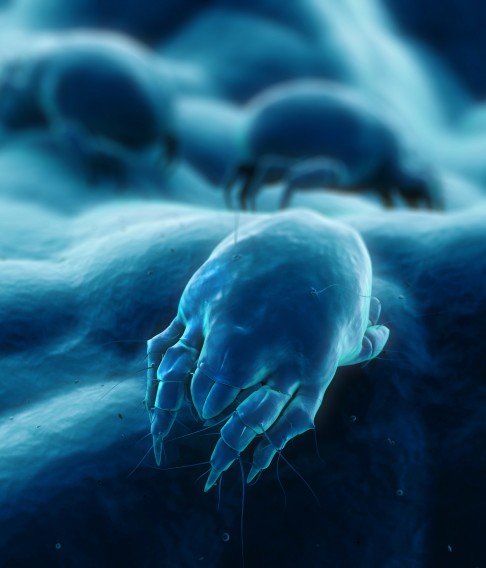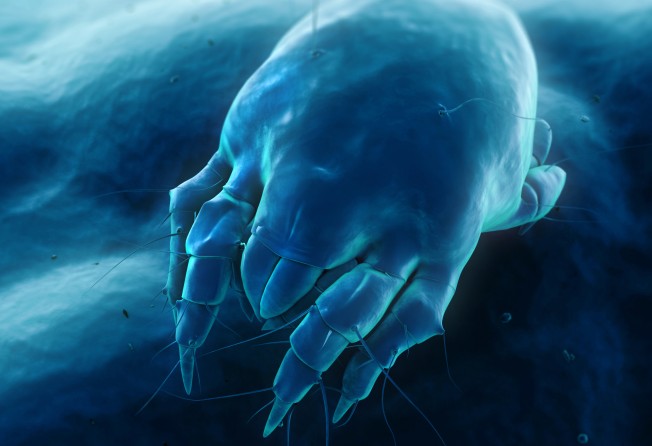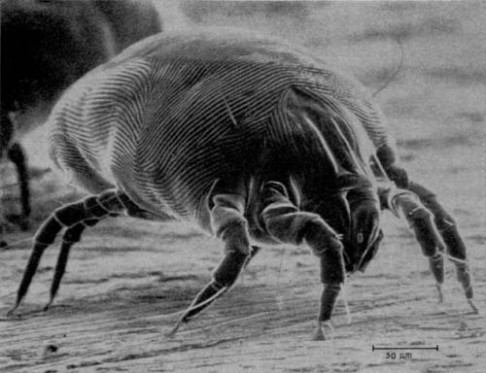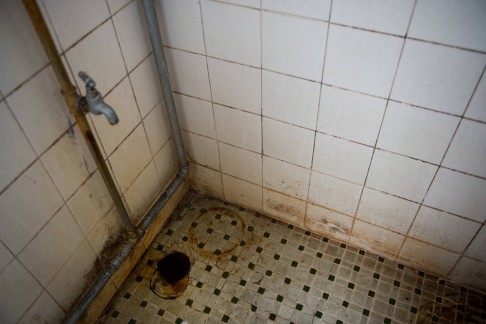
Scientists raise alarm over dust mites infesting Hong Kong homes
Allergy to dust mites causes sneezing, runny nose and asthma. Study of 35 homes finds average mite antigen levels more than twice that which causes body to react. Hazardous levels of mould also found


Hong Kong homes harbour alarmingly high levels of dust mites and mould known to be a major cause of respiratory problems, a study of indoor pollution by Baptist University scientists has found.
The small-scale study of household dust samples, by the university’s Croucher Institute for Environmental Sciences, found average mite antigen levels of 5.37 micrograms per gram, above the 2mcg/g threshold commonly associated with an increased risk of developing allergy to dust mites. Dust samples from all but one of the homes tested had allergen levels higher than the threshold.
Hypersensitivity to the house dust mite antigen is the main cause of indoor respiratory allergies in Hong Kong, specialists say. Symptoms include sneezing, a runny nose, and in serious cases asthma attacks. The study showed antigen levels in some Hong Kong homes far exceeded 10mcg/g, which, according to the World Health Organisation, can increase the chance of an asthma attack. The highest antigen level discovered was 34.13 mcg/g.
Dust mites feed off dead skin flakes and it is their faeces, rather than the creatures themselves, that cause health problems in humans.
The dust samples were taken from floors, mattresses and surfaces such as shelves, wardrobes, TVs and skirting boards, the report says. An average of 6.3 mites per gram were detected in dust from mattresses, with the most extreme sample containing 46 mites per gram.

The samples were collected from 35 homes using high-powered cordless vacuum cleaners produced by Dyson, which commissioned the study.
The analysis also found hazardous levels of mould. There was an average concentration of 542,472 colony forming units per gram in dust collected above floors and in hidden areas. For comparison, a study of mould conducted in the United States found an average concentration of 30,256 colony forming units per gram in “control buildings” – ones perceived as clean.
The most prevalent genus of fungus detected in Hong Kong was Aspergillus, which can grow inside the lungs and cause respiratory disease, the report said. Another prevalent fungus was Cladosporium. Prolonged exposure to high spore concentrations of Cladosporium can cause chronic allergies and asthma.
“Hong Kong has excellent conditions for dust mite cultivation and mould growth,” a Dyson spokesman says. “In fact, the climate is incredibly similar to that which we use to house our dust mites at our microbiology facilities – upwards of 25 degrees Celsius and over 75 per cent relative humidity.
“Mould prefers damp, warm environments, meaning Hong Kong is a good habitat for their spores.”

The spokesman adds that homes are increasingly built with limited ventilation, in order to make them more energy efficient. The flip side is that dust and pollutants become trapped and remain in the home for us to breathe in.
Dr David Ho, an ear, nose and throat specialist with a practise in Hong Kong's Central district, said: “Revealing the true contents of household dust, and the microscopic harmful particles that are invisible to the human eye, is essential if we are to raise the public’s awareness of indoor pollution. Around the world allergies are on the rise and dust mite faeces and mould are key triggers of this. They can be found all around the home environment.
“Bacteria, viruses and mould spores as small as 200 nanometres can cause airway inflammation and even worsen other problems, such as cardiovascular disorders.”
Other potential dangers found in all the samples included endotoxin – the outer membrane of bacteria that can cause powerful inflammatory reactions in humans. It can trigger increased risk of upper respiratory tract infections, airway inflammation, asthma attacks, chronic bronchitis and hypersensitivity pneumonitis, the report says.
The analysis also found E.coli and Staphylococcus are common bacteria in Hong Kong homes.